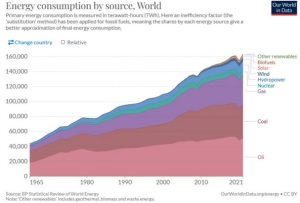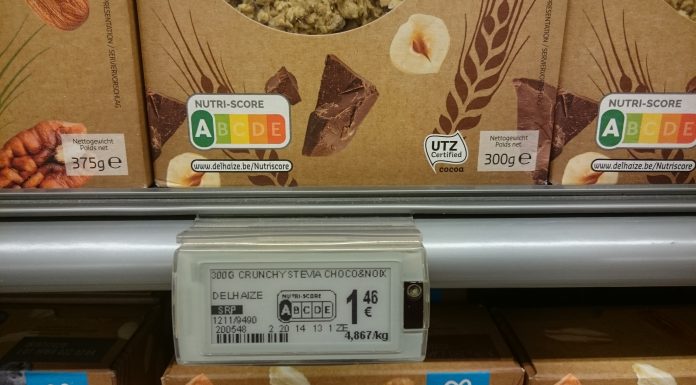
By Dr. Ferdinand Meeus
Last week, the European Union presented its «Green Deal Industrial Plan»: a shiny grabbing box, full of new subsidies and tax breaks, to indulge green industry and help it compete with the US. This really widens the green highway to economic suicide. However, more and more people are thankfully coming to realise that this «transition» is an expensive and unfeasible fairy tale.
The European Green Energy Transition, announced three years ago, on 11 December 2019, by the European Commission, has the main goal of making Europe the first continent on the planet to become ‘climate neutral’. That means a climate target of net zero CO2 emissions by 2050. The goal of 55% reduction of CO2 emissions by 2030 is a kind of intermediate goal. That the Green Energy Transition is a highway to economic suicide is something which I have already explained several times. One cannot run an economy with green unreliable wiggle power. The cost of energy will also double.
After three years, the EU comes up with a plan
So now, after three years, a plan has also been worked out by the European Commission. After all, it takes three years in Europe to realise that a mere announcement to go to zero CO2 emissions by 2050 will not automatically become a reality. Hence, now a real plan was recently announced at the annual World Economic Forum (WEF) conference in Davos by EU Commission President Ursula von der Leyen. She delivered her speech on 17 January 2023, a few weeks after the US Congress passed the «Inflation Reduction Act», which is bazooka of financial benefits to lure Green Energy production to the U.S.
In the U.S., the Green Energy Transition has not yet been implemented into federal law like in Europe, but Joe Biden has created a legal framework with the Inflation Reduction Act (IRA), to provide additional subsidies and extra tax breaks to a whole range of green technologies. The IRA took effect on 1 January 2023. As a result, U.S. manufacturing of wind turbines, solar panels, heat pumps, biomass, biofuels and batteries will be supported with lots of dollars. Private individuals can also get up to $7500 if they buy an electric car made in USA.
On top of this, the IRA has a separate section on subsidies and tax breaks for the green recycling industry and for green energy storage. The total green IRA honey pot contains about $369 billion. Hence Europe’s reaction to also throw money at it, to prevent the green industry from moving to the U.S.
EU lanceert Green Deal Industrial Plan: een groene snelweg naar economische zelfmoord en welvaart vernietiging. Kostplaatje = 662 miljard €https://t.co/Mfjhjq5L9Z
— ferdinand meeus (@fmeeus1) February 5, 2023
The cost of the Green Deal Industrial Plan
The Green Deal Industrial Plan (factsheet) was presented during the WEF’s cosy chat in Davos with the necessary bells and whistles by Ursula von der Leyen to an audience of billionaires, bankers and also some selected government leaders. Ursula also directly addressed the WEF’s Great Leader in particular, adding “Lieber Klaus” on top of the standard opening “Ladies and Gentlemen”. Indeed, Ursula von der Leyen was proud that, three years after the announcement of the European Green Deal, there is finally a real (paper) plan to help industry and member states achieve the goal of zero CO2 emissions by 2050.
Its plan can best be compared to a nicely coloured PowerPoint sales pitch from an expensive consultant. In short: lots of packaging without practical content. However, the WEF audience was only too happy to listen to it all, given Von der Leyen’s promise to throw around green cash. Most attendants could already see the hundreds of billions of euros flowing in. Mainly to be financed with our own tax money.
The Green Deal Industrial Plan is, in Ursula’s ringing words, “one of the greatest industrial transformations of all time”. The plan mentions that 35-40% of working citizens will be affected by the transformation and that those citizens must learn new skills to adapt to the New Green World.
"It is getting time for the EU to abandon its green dogma" – by @pietercleppe:https://t.co/JOxFF6bGkV #climate #EnergyPrices #energy @vonderleyen @KadriSimson #ETS #NuclearPower #gas #Russia
— BrusselsReport.EU (@brussels_report) September 5, 2022
Green hydrogen, the ‘miracle cure’
A society with a carbon-free economy is completely different from the current world we live in. Today, energy in Europe is available 24/7 thanks to fossil fuels and nuclear power. In a Green World that runs mainly on unreliable solar and wind power, this is not the case. Current battery technology to store energy provides a few days’ back-up at best. The new miracle green hydrogen will always remain a fairy tale.
However, for companies and governments looking to invest in green hydrogen, a new source of European subsidies does open up. Thanks to those subsidies, some countries are even willing to start producing green hydrogen in the African desert, to then bring that ‘panacea’ to European ports, with special ships. The fact that 80% of the energy content is lost and that an extremely dangerous flammable and explosive substance is being transported (think of the Hindenburg catastrophe, think of the Challenger disaster) has not really dawned on European policymakers and government leaders. The latter are blinded by the billion-dollar flow of green subsidies.
I like this simple and true answer. Hydrogen for mobility is « stupid ». It is the most precious molecule, the base feedstock for industrial chemistry , organic chemistry and oil refining. All explained in my book « The Hydrogen Illusion » https://t.co/veOnlJ36bH
— Samuele Furfari (@FurfariSamuele) December 1, 2022
The global share of solar and wind energy: 4 percent
Today, green energy from solar and wind barely accounts for 4% of the world’s total energy consumption. In Europe, this share is about 9%. Only EU officials in a cosy ivory European temple in Brussels could come up with an industrial plan to take that 9% in Europe to unprecedented heights. However, they are only able to realise this on paper, while most of them will be long retired by 2050.

China
Another painful aspect of the green energy transition in Europe and the U.S. concerns China. In reality, the small share of green energy in total energy consumption today is still more than 90% dependent on products made in China. So to support the rapid growth of that green energy transition, a lot of cash also needs to be spent to build a green industry in Europe from the bottom up, with associated production chains and supply lines, independent of China. That will not be easy. Production costs in China are significantly cheaper and will remain so.
662 billion euro
Because of this, Ursula stated in her speech that the Green Deal Industrial Plan has several pillars, which are all needed in order to achieve success:
- The green transition in Europe must involve production chains and raw material supply lines
- More money needs to go to green energy transition projects, through already existing European funds
- Fewer regulations are needed to speed up the transition
- Even more green financing will be provided, through a new separate fund, which is yet to be created
- New ‘green’ skills that are needed will also receive more green funding.
To sum up: it will all cost quite a lot, €662 billion in total. Taxpayers will need to pay for this, and it will be spent by unelected but highly paid European Commission officials. The retirement age for EU staff is 66. In a few years, Ursula von der Leyen (born in 1958), with a current salary of about €36,000 a month, will retire. At that point, she will be able to enjoy crickets and worms, with the grandchildren of her seven children, so to reduce her carbon footprint. Climate Pope Frans Timmermans (born in 1961) will also soon enjoy a generous European pension. So much for the good news.
Pandora’s box
I hope the successors of Ursula and Frans will still be able to turn the tide at that point. Surely, in the coming weeks and months, Eastern Europe, Sweden and Italy will make sure their voices are heard to adjust the Green Industrial Plan. Indeed, there is a great danger that the Plan will open a Pandora’s box, with EU member states competing each other to death to lure green industry to their countries with state aid. I expect that by 2030, the technical and economic failure of the green energy transition will slowly have become clear, after a few painful blackouts and also following opposition by industry and the financial sector.
Central planning did not work in the past and it won't work this time. My take on the 'European Green Deal' on @brussels_report:
'The “European Green Deal”: another fateful attempt at central planning'https://t.co/2MgoGIEq2S
— Fabian Wintersberger (@f_wintersberger) April 21, 2021
Germany: «Save our industry»
In Germany, the green energy catastrophe is already evident with the restart of lignite mining (not to restart this would mean no power and no heating). There, a counter-movement from industry has already started, supported by scientists arguing for less climate hysteria and more climate realism. Their common motto is: «Rettet unsere Industrie».
Also in the financial sector, people are starting to realise that investing in ‘green projects’ brings no financial added value. These are only artificially viable through subsidies. Green Energy is only able to survive through all kinds of state aid, which is not exactly in line with the European free market.
👤Nikolas Stihl lamented that Germany is becoming increasingly unappealing as a location for entrepreneurs, businesses, and industrial manufacturing, so much so that could ultimately lead to the deindustrialization of the country. #Germany #economy #Crisishttps://t.co/iorMXJ7FrR
— The European Conservative (@EuroConOfficial) December 22, 2022
Vanguard is one of the largest private financial asset managers in the world. The American company announced in December 2022 that it would stop investing in climate net zero projects, because the financial returns of such investments are lower in comparison to its ordinary investments. Vanguard has seven trillion dollar in invested assets in total. The money comes from pension funds, insurers and private individuals, at least a few of whom were present in Davos.
Vanguard quits net zero climate effort, citing need for independence https://t.co/4TaojXmVdJ
— The Globe and Mail (@globeandmail) December 7, 2022
What to expect in the near future
In the short term, it can be foreseen that the U.S. and Europe are heading for a pointless bidding war against each other, with subsidies, tax breaks and other creative state support, to lure green industry. Even within Europe, member states will compete among themselves for the money. We are going to hear all about that in the coming weeks and months. The winners, of course, will be the audience in Davos, who are able choose between the countries where they get the most financial benefits.
Unfortunately, as always, it will be the hard-working citizens that will end up paying for all this green nonsense.
Originally published in Dutch by OpinieZ
Disclaimer: www.BrusselsReport.eu will under no circumstance be held legally responsible or liable for the content of any article appearing on the website, as only the author of an article is legally responsible for that, also in accordance with the terms of use.












